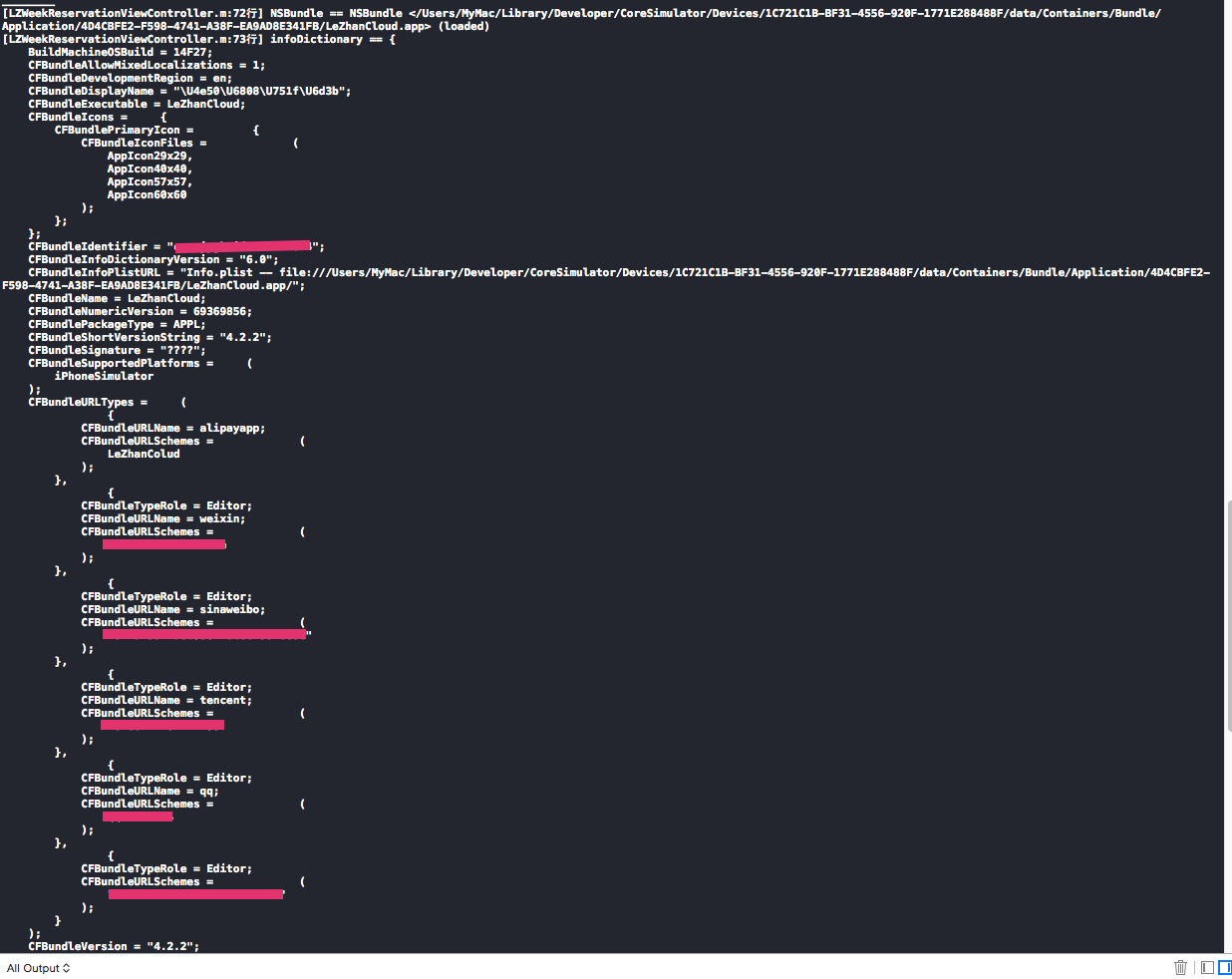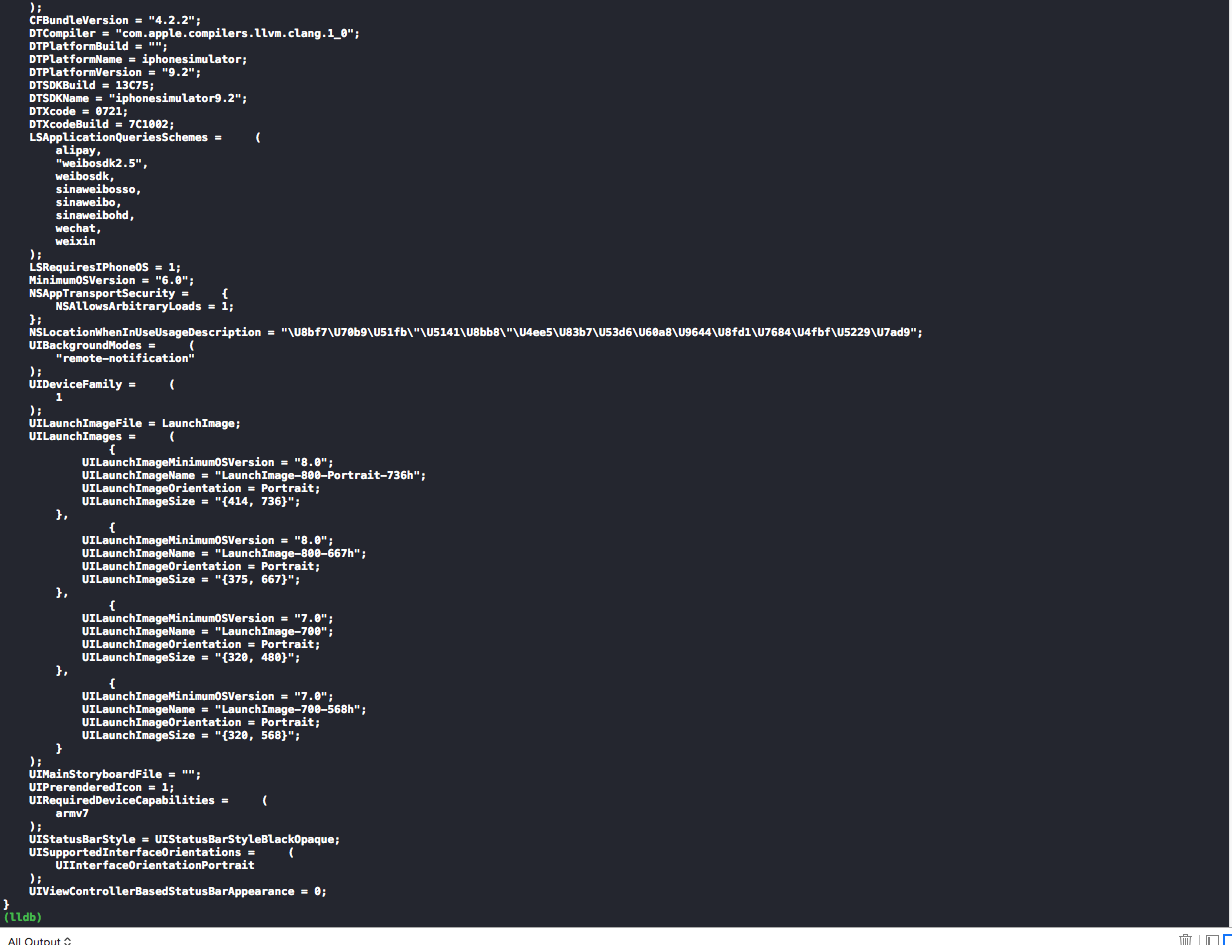NSBundle 简介
bundle是一个目录,其中包含了程序会使用到的资源. 这些资源包含了如图像,声音,编译好的代码,nib文件(用户也会把bundle称为plug-in)。 对应bundle,cocoa提供了类NSBundle。
我们的程序是一个bundle. 在Finder中,一个应用程序看上去和其他文件没有什么区别。 但是实际上它是一个包含了nib文件,编译代码,以及其他资源的目录. 我们把这个目录叫做程序的main bundle。
bundle中的有些资源可以本地化.例如,对于foo.nib,我们可以有两个版本: 一个针对英语用户,一个针对法语用户。 在bundle中就会有两个子目录:English.lproj和French.lproj,我们把各自版本的foo.nib文件放到其中。 当程序需要加载foo.nib文件时,bundle会自动根据所设置的语言来加载。
NSBundle 使用方法
NSString *resPath = [[NSBundle mainBundle] resourcePath];
NSString *path = [[NSBundle mainBundle] bundlePath];
NSBundle *otherBundle = [NSBundle mainBundle];
NSString* path = [resPath stringByAppendingPathComponent:@"a.bundle"];
NSBundle *bundle = [NSBundle bundleWithPath:path];
NSString path = [otherBundle pathForImageResource:@"img"];
NSImage *img = [[NSImage alloc] initWithContentsOfFile:path];
Class newClass = [otherBundle classNamed:@"Person"];
id person = [[newClass alloc] init];
Class aClass = [otherBundle principalClass];
id classInstance = [[aClass alloc] init];
BOOL flag = [NSBundle loadNibNamed:@"ViewController" owner:someObject];
NSString *filePath = [[NSBundle mainBundle] pathForResouse:@"re" ofType:@"xml"];
NSData *data = [[NSData alloc] initWithContentsOfFile:filePath];
NSString *path = [[NSBundle mainBundle] pathForResource:@"readme" ofType:@"txt"];
NSDictionary *dict = [NSDictionary dictionaryWithContentsOfFile:[[NSBundle mainBundle] pathForResource:@"ViewControllers" ofType:@"plist"]];
- 1
- 2
- 3
- 4
- 5
- 6
- 7
- 8
- 9
- 10
- 11
- 12
- 13
- 14
- 15
- 16
- 17
- 18
- 19
- 20
- 21
- 22
- 23
- 24
- 25
- 26
- 27
- 28
- 29
- 30
- 31
- 32
- 33
- 34
- 35
- 36
- 37
- 1
- 2
- 3
- 4
- 5
- 6
- 7
- 8
- 9
- 10
- 11
- 12
- 13
- 14
- 15
- 16
- 17
- 18
- 19
- 20
- 21
- 22
- 23
- 24
- 25
- 26
- 27
- 28
- 29
- 30
- 31
- 32
- 33
- 34
- 35
- 36
- 37
获取mainBundle包内容信息(infoDictionary)
1.以下是常用的获取包内容的方法:
NSString *version = [[[NSBundle mainBundle] infoDictionary] objectForKey:@"CFBundleVersion"];
NSString *version2 = [[NSBundle mainBundle] objectForInfoDictionaryKey:@"CFBundleShortVersionString"];
NSString *bundleId = [[[NSBundle mainBundle] infoDictionary] objectForKey:@"CFBundleIdentifier"];
NSString *appName = [[NSBundle mainBundle] objectForInfoDictionaryKey:@"CFBundleName"];
NSString *appName = [[NSBundle mainBundle] objectForInfoDictionaryKey:@"CFBundleDisplayName"];
#define XLocalizedString(key, comment) [[NSBundle mainBundle] localizedStringForKey:(key) value:@"" table:nil]
- 1
- 2
- 3
- 4
- 5
- 6
- 7
- 8
- 9
- 10
- 11
- 12
- 13
- 14
- 15
- 16
- 17
- 18
- 19
- 1
- 2
- 3
- 4
- 5
- 6
- 7
- 8
- 9
- 10
- 11
- 12
- 13
- 14
- 15
- 16
- 17
- 18
- 19
2.其实包中还有许多其他的信息
NSBundle *mainBundle = [NSBundle mainBundle];
NSLog(@".app 应用文件 路径:%@", mainBundle);
NSDictionary *infoDictionary = [[NSBundle mainBundle] infoDictionary];
NSLog(@"infoDictionary = %@",infoDictionary);
打印结果:

























 2万+
2万+











 被折叠的 条评论
为什么被折叠?
被折叠的 条评论
为什么被折叠?








